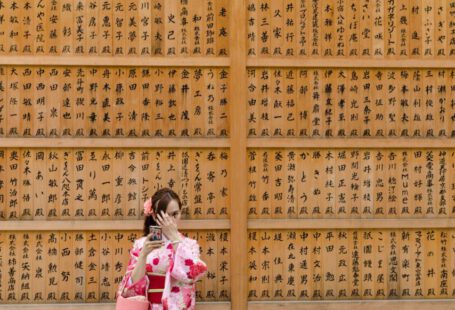When visiting temples and shrines in Japan, it is important to adhere to a respectful dress code. These sacred places hold great cultural and religious significance, and it is crucial to show proper respect by dressing appropriately. In this article, we will explore the dress code guidelines for temples and shrines in Japan.
General Guidelines
Before we delve into specific dress code requirements, it is important to understand the general guidelines for visiting temples and shrines in Japan. Firstly, it is essential to maintain a respectful and modest demeanor. This includes refraining from loud talking or disruptive behavior. Additionally, it is customary to bow upon entering and leaving the temple or shrine as a sign of respect.
Covering the Shoulders and Knees
One of the most important aspects of the dress code for temples and shrines in Japan is to ensure that your shoulders and knees are covered. This applies to both men and women. Sleeveless tops, tank tops, and short skirts or shorts are considered inappropriate for these sacred places. It is advisable to wear shirts or blouses that cover the shoulders, and skirts or pants that extend below the knees.
Footwear
When visiting temples and shrines in Japan, it is customary to remove your shoes before entering the main hall or inner sanctum. Therefore, it is important to choose footwear that is easy to take off and put on. Slip-on shoes or sandals are ideal for this purpose. Socks are generally worn inside the temple or shrine, so it is recommended to bring a clean pair to wear.
Avoiding Flashy or Revealing Clothing
In addition to covering the shoulders and knees, it is important to avoid wearing flashy or revealing clothing when visiting temples and shrines in Japan. This includes clothing with bold patterns, excessive jewelry, or low-cut tops. The focus should be on showing respect and humility, rather than drawing attention to oneself.
Head Coverings
In some cases, it may be required to cover your head when entering certain areas of a temple or shrine. This is particularly true for women when entering a shrine or temple with a specific religious significance. It is recommended to carry a scarf or a hat that can be easily worn when needed.
Special Considerations for Traditional Events
During traditional events or ceremonies held at temples and shrines, there may be additional dress code requirements. For example, if attending a tea ceremony or a traditional wedding, it is customary to wear formal attire, such as a kimono or a suit. It is advisable to check with the event organizers or do some research beforehand to ensure that you are appropriately dressed for the occasion.
Respecting Cultural Norms
Respecting the cultural norms and traditions of Japan is essential when visiting temples and shrines. It is important to be mindful of the dress code guidelines and ensure that you are dressed appropriately. By doing so, you will not only show respect for the sacredness of these places but also gain a deeper understanding and appreciation for Japanese culture and customs.
In conclusion, when visiting temples and shrines in Japan, it is crucial to adhere to a respectful dress code. Covering the shoulders and knees, avoiding flashy or revealing clothing, and respecting special considerations for traditional events are all important aspects of the dress code. By following these guidelines, you will be able to show proper respect and appreciation for the cultural and religious significance of these sacred places.





